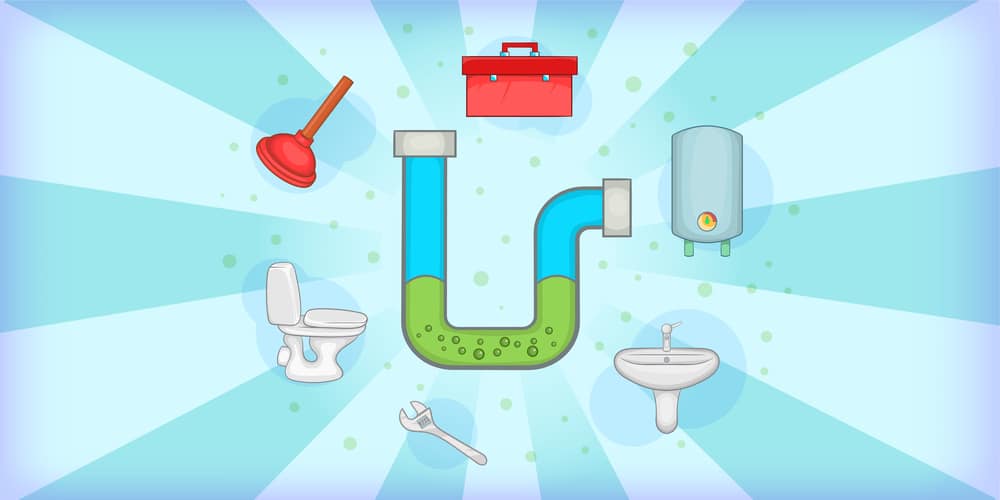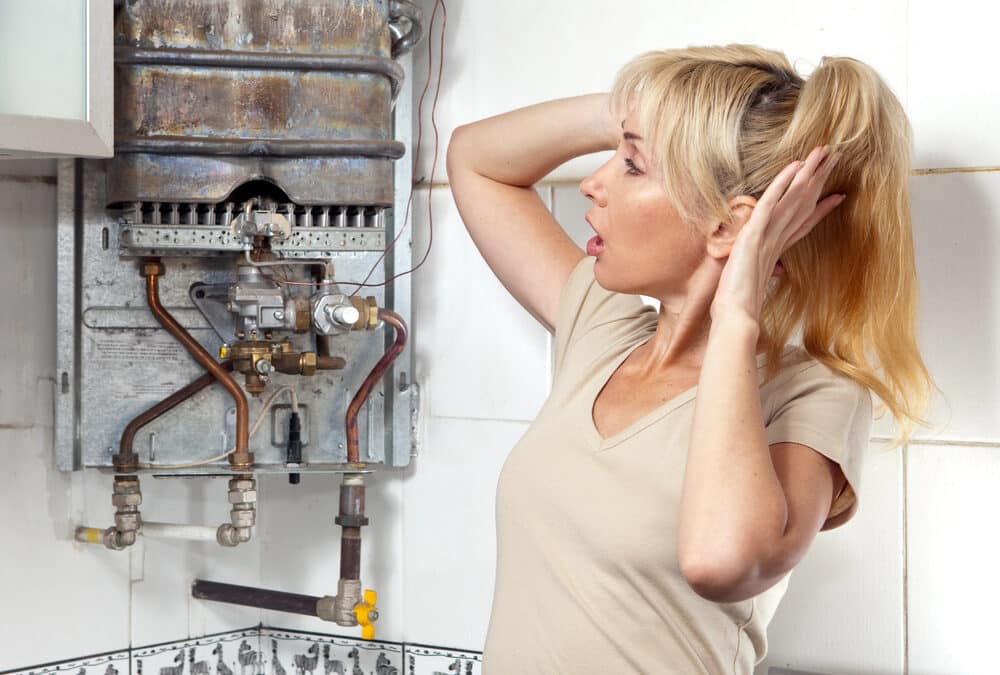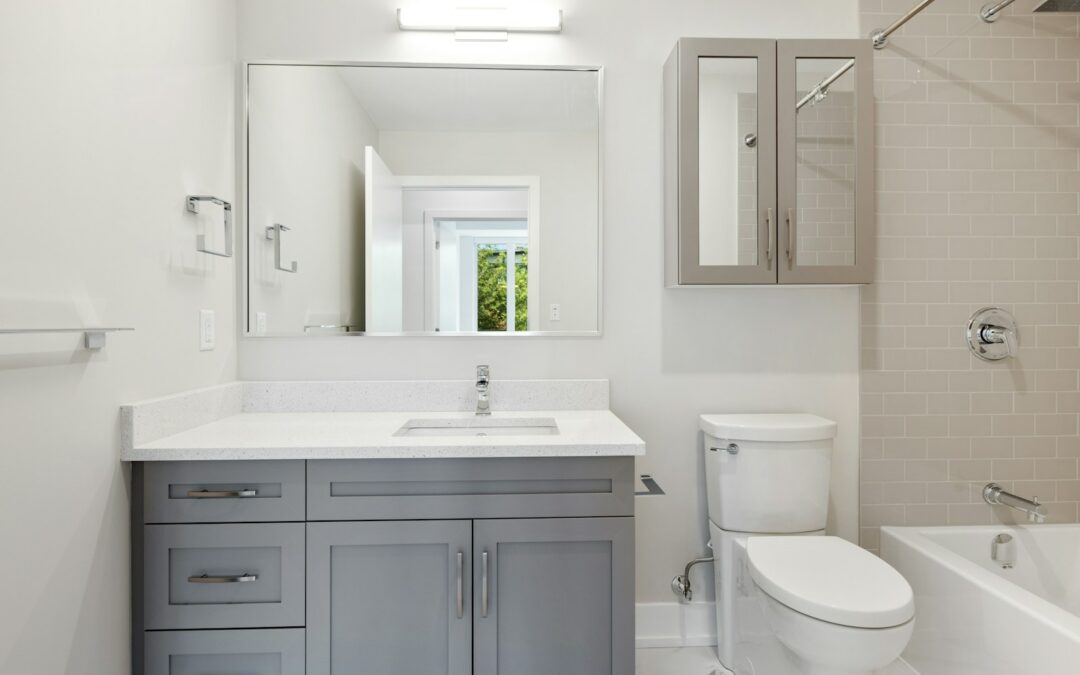The kitchen is a central hub in any home, and a well-functioning kitchen sink is essential for daily tasks such as washing dishes, preparing meals, and cleaning up. For your kitchen sink to function properly, it is important to understand the basics of kitchen sink plumbing.
Knowing the components involved in your kitchen sink plumbing setup, the plumbing code that applies to your kitchen sink, and how to troubleshoot any common problems is one of the key steps in keeping your kitchen sink running effectively. This article will cover all of these, starting with the basics of kitchen sink plumbing.
What Is Kitchen Sink Plumbing?
Kitchen sink plumbing is the system of pipes, fixtures, and valves that bring water to and from your kitchen sink. It includes a drain, which transports wastewater away from your house; a supply pipe, which brings in fresh water for cleaning; and several valves that control hot and cold water flow. Depending on your home’s age, you may also have an old-style blockage at the bottom of the sink called a P-trap.
Schedule Service Online
Get a free estimate so you know what you're signing up for
"*" indicates required fields
For Emergency Services Call: 410-255-9300
The Kitchen Sink Plumbing Code
The Kitchen Sink Plumbing Code is a set of laws and regulations that dictate how kitchen sinks must be installed to ensure safe and efficient operation. In most cases, this code is enforced by local building officials, who inspect kitchens during the building process to ensure that all components are up to code.
For example, The International Plumbing Code (IPC), a set of regulations designed to ensure the correct installation and maintenance of kitchen sink plumbing systems, requires that all kitchen sinks be connected to the public sewer system, if available, or a private sewage system. It also specifies the size, type, and location of kitchen sink fixtures, including the drain height, the P-trap arm length, and the materials they should be made from.
It also outlines safety requirements to prevent electric shocks, such as air gaps between sink drains and nearby electrical outlets. The IPC also stipulates that all kitchen sinks must have an appropriate trap – either a P-trap for single bowls or an S-trap for double bowls – installed beneath them to prevent sewer gases from entering the home through the drain.
Each type of trap requires certain minimum dimensions to function correctly. For example, a P-trap must meet minimum depth requirements and have a minimum 1 1/4 inch vent line to avoid clogs and backups.
There are also more specific rules about individual components, such as supply pipes and valves. For example, supply pipes must meet certain size criteria to provide adequate water pressure for efficient sink operation.

The Kitchen Sink Plumbing Setup
The kitchen sink plumbing setup involves several components that work together to ensure your sink runs smoothly. This setup includes the drain, supply lines, and vent lines.
The Drain
The kitchen sink drain is the exit point for wastewater from the sink. A large pipe runs underneath the sink basin, usually on the left side, leading to the main sewer line under your house. The drain pipe is typically made of PVC pipe or a metal such as copper or brass and is connected to your home’s drainage system.
The bottom of the drain usually features a “trap” that holds water which acts as a barrier between your home and any sewage lines your drain may be connected to.
A P-trap is often used as well, and this part should always remain full of water to prevent bad smells from entering your home through the sink.
The drain pipe also has an outlet. The drain outlet is the opening in the drain line where water leaves your sink basin. It is typically located near the front of the sink, and it is connected to a tailpiece pipe that runs down into the P-trap before connecting to the main sewer line.
The Supply Lines
The supply lines in sink plumbing are the pipes responsible for supplying hot and cold water to the sink. Typically made of copper or plastic, these pipes run into the wall behind the sink and then travel through the home’s walls until they reach the main water supply line.
The Vent Lines
The Vent Lines in kitchen sink plumbing are critical components that allow air to escape from the plumbing system. This is important for preventing waterlogging and ensuring proper operation of the pipes.
The vent lines run from the drain, through the wall behind the sink, then through the ceiling to a vent stack outside the house. The main purpose of a vent line is to provide an escape for air bubbles and pressure changes that arise in your plumbing system.
Vent lines also help reduce the noise from water flowing and draining away quickly, making them great for preventing loud gurgling noises and helping maintain balanced pressure levels in your pipe system.
Steps To Install A Kitchen Sink
Installing a new kitchen sink is basically connecting the various parts of the kitchen sink together. For ease, we have grouped the installation steps into three categories-Drain, supply lines and vent lines.
Drain
1. Measure the height of the drain outlet from the wall surface. This will determine where you need to cut your PVC tubing with a PVC tubing cutter.
2. Connect the tailpiece pipe to the sink drain and use a slip nut to connect it to the P-trap. Make sure that all connections are secure before moving on to the next step.
3. Connect the P-trap to the main drain line using a slip nut and secure it with plumber’s tape.
4. Test for leaks by turning on the water and flushing out any air bubbles that may have formed in the pipes.
Supply Lines
1. Install shut-off valves at each supply line to control the temperature of the water.
2. Connect the supply lines to the shut-off valves and secure them with plumber’s tape.
3. Turn on the main water supply valve and check for leaks at each connection point.
Vent Lines
1. Measure and cut your vent line pipe to fit through your wall and ceiling.
2. Connect the vent line to the sink drain and secure it using a slip nut.
3. Connect the vent line to the outside vent stack and check for leaks at each connection point.
4. Turn on the main water supply valve and flush out any air bubbles that may have formed in your pipes.
Once all the connections are secure, and there are no leaks, you should be ready to use your new sink drain.
Common Plumbing Issues
Common issues with kitchen sink plumbing include clogged drains, leaking pipes, slow water flow, foul odors, and deteriorating pipes.
Clogged Drains
Clogged drain pipes are usually caused by food particles and other debris accumulated over time.
Leaking Pipes
Worn-out fittings or loose connections usually cause leaks in plumbing lines. If you suspect a leak, it is important to call a professional as soon as possible to prevent further damage and costly repairs.
Slow Water Flow
Slow water flow can be due to several factors, including mineral buildup and blockage in the pipes. This problem can often be fixed with regular maintenance, such as cleaning drain traps or replacing worn-out parts.
Foul Odors
Foul odors from your sink can be caused by various factors, including an improperly installed P-trap, an accumulation of food particles and grease in the drain, or sewer gas leaking into the home.
Deteriorating pipes
Over time, pipes can become corroded or worn down due to various environmental factors such as water pressure, temperature changes, and chemicals. This can lead to leaky pipes or blockages that may require professional attention.
To keep your kitchen sink running smoothly and safely, it is important to perform regular maintenance on your pipes and fixtures.
How To Maintain Your Kitchen Sink Plumbing
Maintaining your kitchen sink is relatively simple and doesn’t require any specialized tools or knowledge. Here are 5 ways to maintain your kitchen sink to ensure that they last longer:
1. Clean Your Drains Regularly
Use a mixture of baking soda and vinegar to clear out accumulated food particles, grease, and other debris in your sink drains. This will help keep your plumbing lines free-flowing and reduce the risk of clogs or blockages.
2. Replace Worn Out Parts
Inspect all the fittings and components of your kitchen sink plumbing, such as the faucet, basket strainer, drain stopper, and pipes, for signs of wear and tear. If any of them appear to be damaged or worn out, replace them with new parts as soon as possible.
3. Insulate Pipes
Use insulation tape or foam insulating tubes to protect your pipes from extreme temperatures. This will reduce the risk of freezing or sweating, which can cause pipe problems in the long term.
4. Monitor Water Pressure
Check your water pressure every month to make sure it isn’t too low or too high. Low water pressure can lead to inefficient usage of resources, while high water pressure can damage your pipes over time.
5. Install A New Sink Drain
If you’re installing a new sink, make sure that the drain lines are connected properly, and the wall surface is sealed at the proper drain outlet height.
However, some sink fixtures need special maintenance, like the garbage disposals and the ground lines. If you need maintenance for any of these, you should contact a professional for help.
Importance of Proper Kitchen Plumbing Installation and Maintenance
Proper kitchen plumbing installation and maintenance are important for several reasons.
- Proper kitchen plumbing and installation help maintain a healthy and clean kitchen environment by preventing water leaks or plumbing issues.
- It prevents costly repairs or replacements of fixtures that can be damaged due to improper installation or maintenance.
- Properly installed and maintained plumbing allowed for better water pressure and improved drainage, which can help make your dishwashing and other kitchen tasks easier.
- Any malfunctions within the system will be much easier to identify and repair due to proper installation and maintenance practices.
- It increases the value of your home in case you ever decide to sell.
In conclusion, proper kitchen sink plumbing is essential to ensure a safe and healthy kitchen environment while also preventing costly repairs or replacements down the
Conclusion
Kitchen sink plumbing can initially seem intimidating, but with a little knowledge and some basic maintenance tips, you can easily keep your pipes in good working order. Start by familiarizing yourself with the components of your plumbing system and then inspect all parts regularly for any signs of damage or wear. Additionally, ensure that all vents are properly connected and clear out any clogs or debris in your P-trap using mild detergents and water solutions. Finally, check the ground line for cracks or leaks to prevent sewer gas from entering your home.
Let MD Sewer and Plumbing Cater For All Your Kitchen Sink Plumbing Needs
If you’re looking for help with your kitchen sink, look no further than MD Sewer and Plumbing. Our experienced team of licensed plumbers is available 24/7 to handle your plumbing needs. We offer a wide range of services for residential and commercial kitchens, including installation, repair, replacement, maintenance, cleaning, and more. So, whether it’s a clogged drain or a leaky faucet, we have the knowledge and expertise to get the job done right the first time. Contact us today to schedule an appointment and keep your kitchen safe and efficient!




